Choosing a Deck: Plastic or Wood?
http://decor-ideas.org 07/22/2013 16:45 Decor Ideas
Before you choose between plastic and wood for your decking, ask yourself one question: Where is your deck? If your deck is in the sun or in the shade for the majority of the day — particularly in summer, when it will be used most — you'll want to choose the material that will be comfortable in that spot on the hottest days of the year.
Of course, size, cost, style and maintenance should factor into your decision, too. We talked to four decking experts from across the country to find out how to choose a decking material.
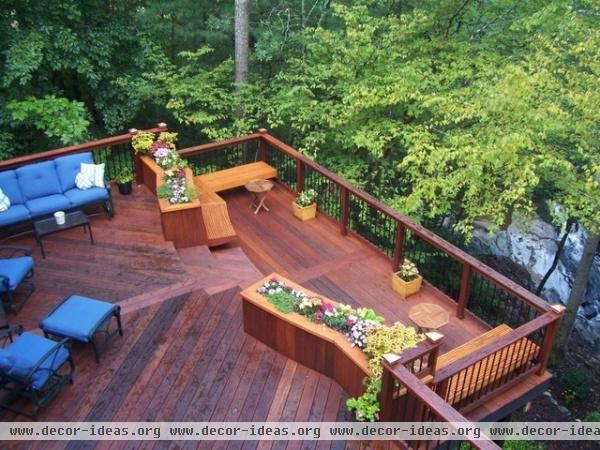
Types of Decking
Plastic: 100 percent plastic decking is stain resistant and won't crack, warp or splinter. It doesn't require any finishing. Some plastic decking is made from new plastic; others are partially or completely recycled. Composite: This decking is made from wood fibers (usually recycled maple sawdust) and recycled plastic. Dense, weather and stain resistant, it won't splinter, warp or rot. Wood: Most of today's wood decks are made of cedar, redwood (pictured), pressure-treated pine or ipe, a sustainable tropical wood. You can find sustainably produced versions of most hardwoods, including bamboo, cedar, redwood and ipe. Make sure to buy wood from a Forest Stewardship Council (FSC) certified company to avoid illegally harvested wood.
Charlie Jourdain, President of the California Redwood Association, says substantially more people have started using plastic and composite decking over the past 10 years, and Denny Rossi of Seal It Green agrees. "Michigan seems to favor plastic and composite decking, and now plastic-capped composites as the ever-growing field of less maintenance materials evolves," Rossi says.
Clemens Jellema of Fine Decks Inc. in Maryland now installs almost all composite decking for his clients. Capped composite decking, in particular — where the composite is covered in a thin, plastic material — has become popular for its durability and quick installation.
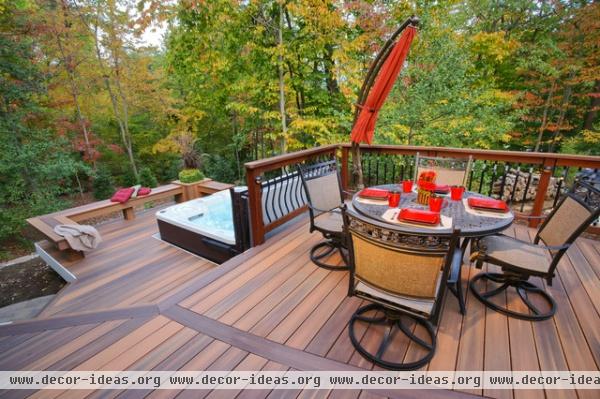
Heat Resistance
"At the time composites and plastics were made, there wasn't a lot of thought as to how they'd perform in heat," Jourdain says.
While composites and plastics have their benefits, comfort on a hot day is not one of them. "Composites and plastics can get so hot, you can't walk on them barefoot," Rossi says. Capped composites are no different. "The plastic layer surrounding the composite holds heat," Jellema says. "But the lighter the color, the less heat it holds."
This photo: Azek plastic decking
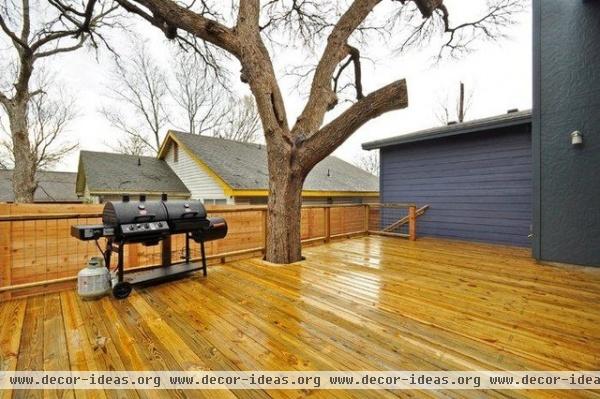
For this reason, many professionals recommend using wood in climates with extra hot summers. Tropical woods, such as ipe and teak, wear and weather well. However, some of this wood is dark, so it holds more heat than lighter woods, such as the commonly used pressure-treated Southern yellow pine.
Redwood tends to be the West Coast's — primarily California's — predominant decking material due to its reasonable price tag, low maintenance and cool surface. "Redwood is definitely the cheapest material in California because there's so much of it," says California contractor Bonny Weil. "Manufacturing costs are very low, versus a composite decking board that might take a lot of time to make, so it tends to be about twice as much."
This photo: Pine decking
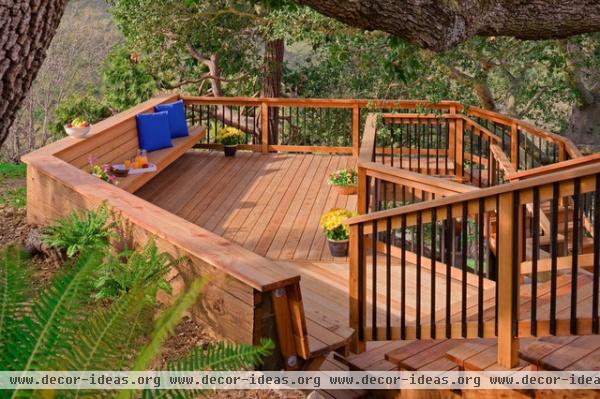
Maintenance
No matter what material you choose for your deck, it's going to need maintenance — a minimum of one annual cleaning. Most composites and plastics need a regularly applied finish (once or twice a year) to keep from fading, but most decking wood can be left finished or unfinished. While wood is more susceptible to rot and warping, mold spots are more difficult to remove from composite and plastic decking.
This photo: Redwood decking
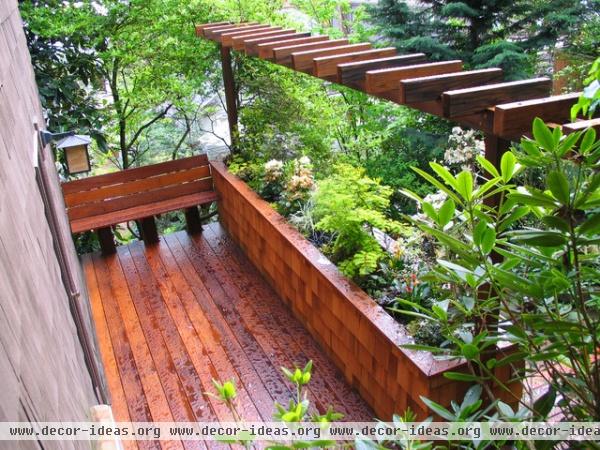
Cost
Composite or plastic decking can be twice as expensive as wooden decking because the materials cost more and the structure tends to be more extensive. Composite decking isn't as stiff as lumber, so it generally needs more support to prevent sagging. This can easily add hundreds of dollars to your decking cost.
Here are some average prices for a completed deck per square foot, according to Rossi and Jellema. Note that prices will vary according to location, design features and construction costs.
Estimated price for a complete deck per square foot:
Pressure-treated wood: $15-$25 Cedar: $24-$45Composite: $32-$45Redwood: $30Top-end plastic: $48Ipe: $55This photo: Redwood decking
Photos: See thousands of deck designs | Get help with your deck or patio
Related Articles Recommended












